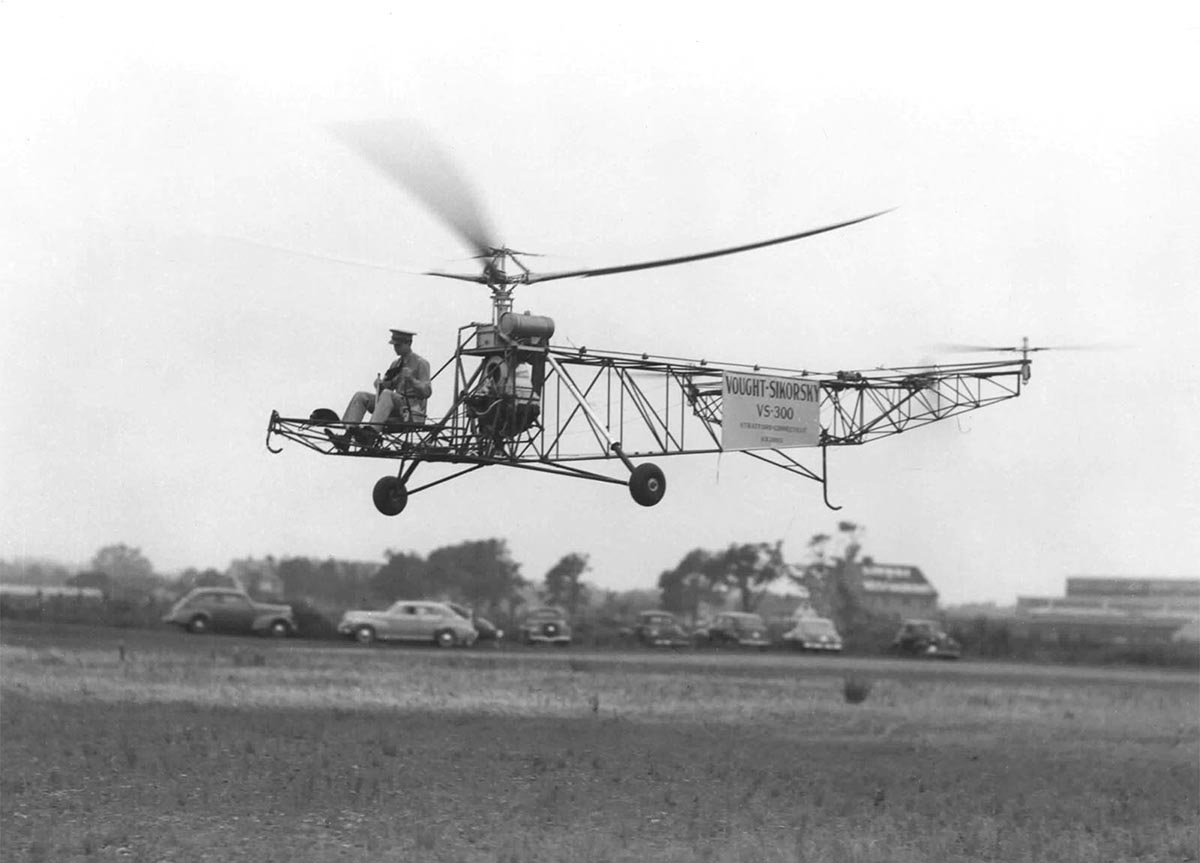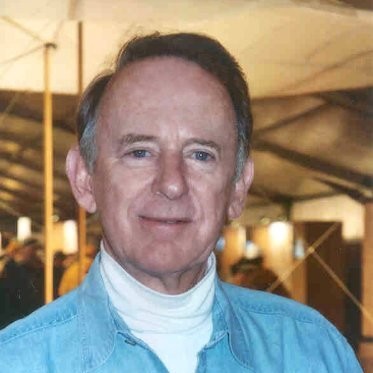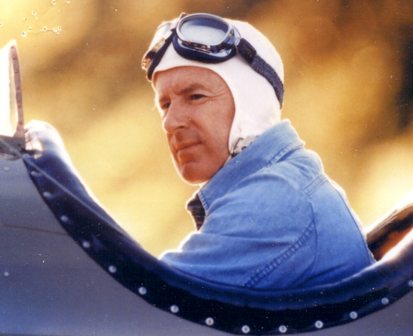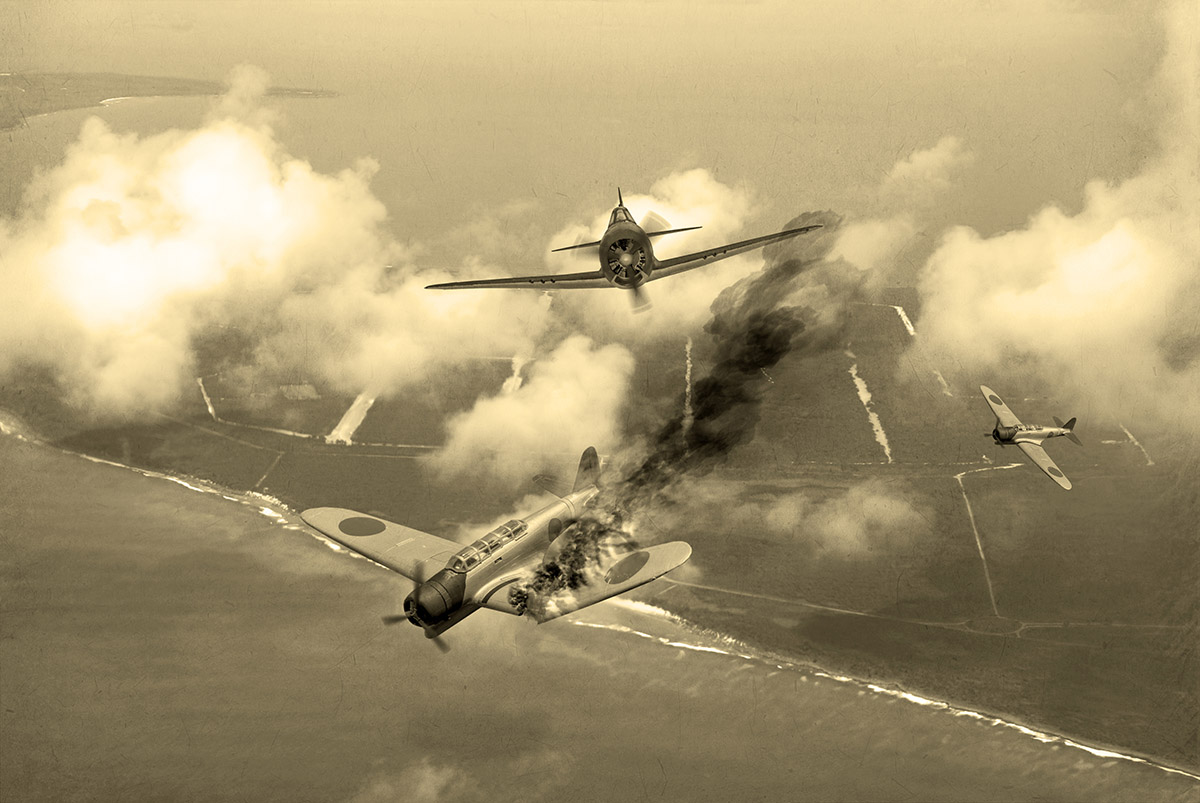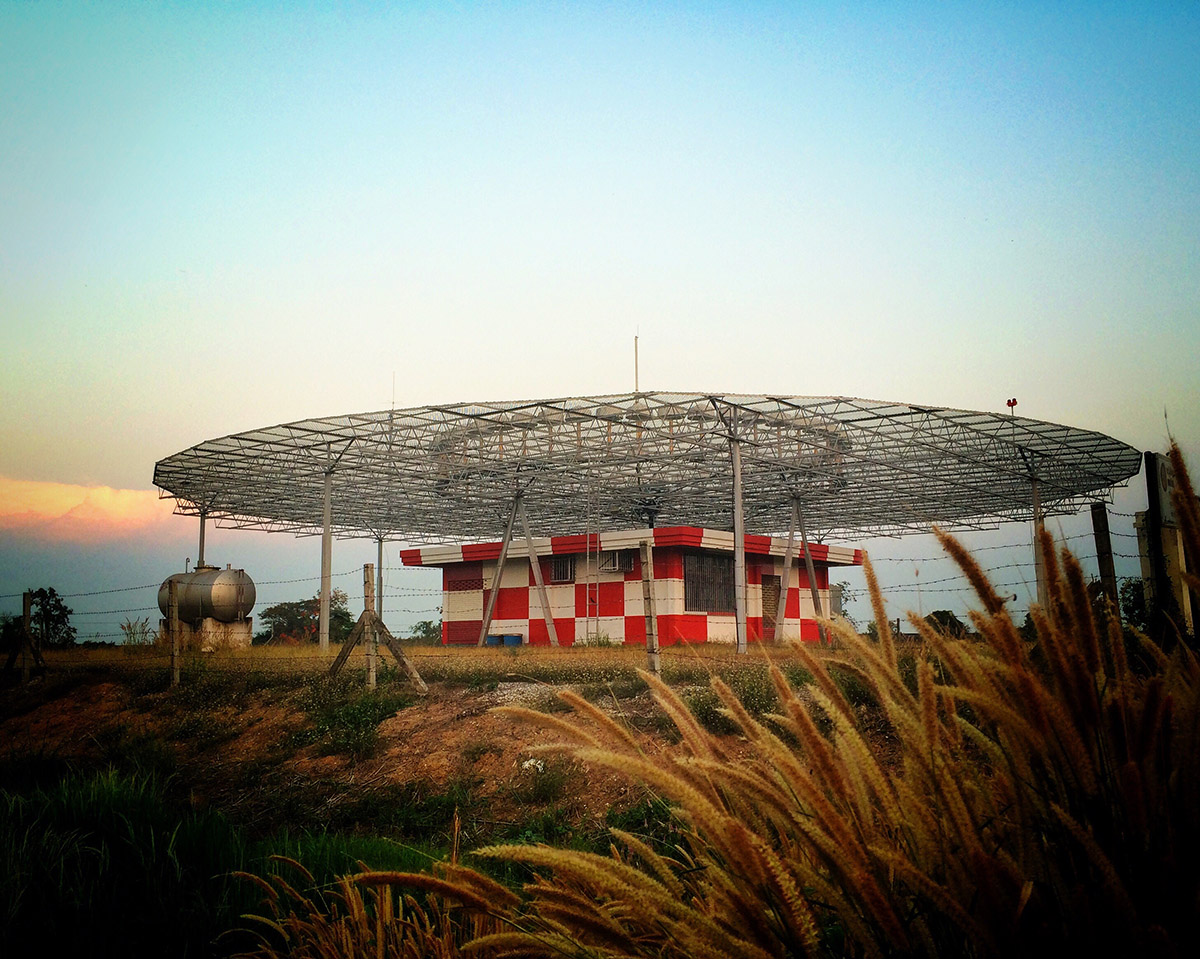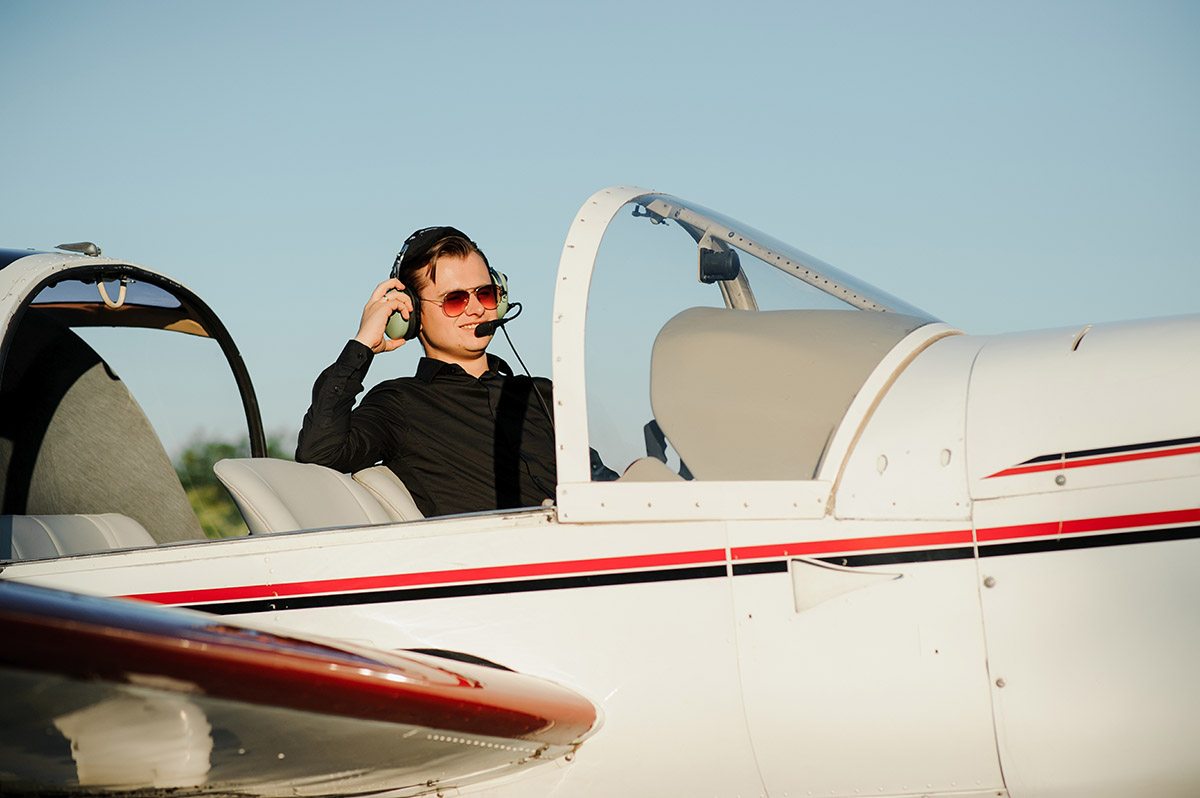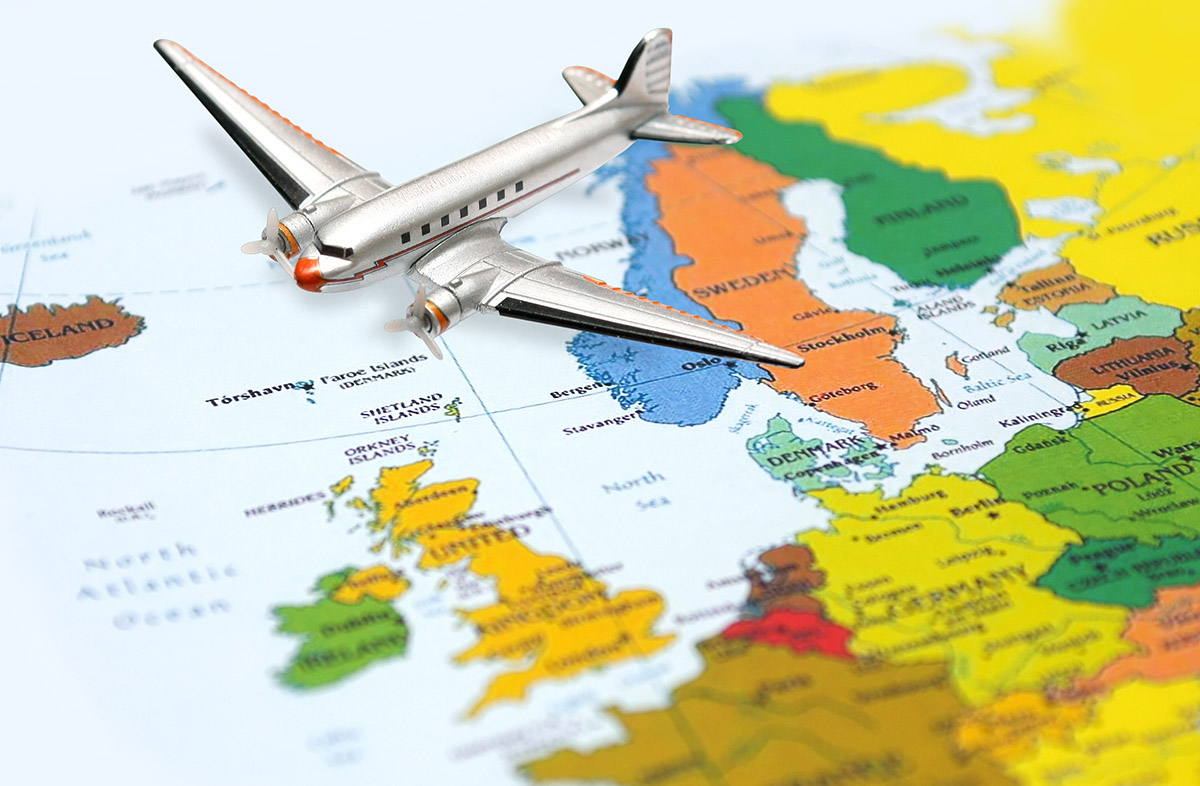Have you ever gazed at those helicopters soaring through the sky and wondered how they came to life? Who invented the helicopter? You might not know this, but they have gone through a many-century-long journey from their infancy to their full-fledged appearance today.
Let’s walk through each chapter of their revolution!
In this article:
Who Made The First Helicopter And When?
Paul Cornu, known as the founder of helicopters, successfully designed the very first model in 1907. While there were earlier inventions, this French pilot created the first human-carried model capable of taking off approximately 1 foot above the ground for around 20 seconds.
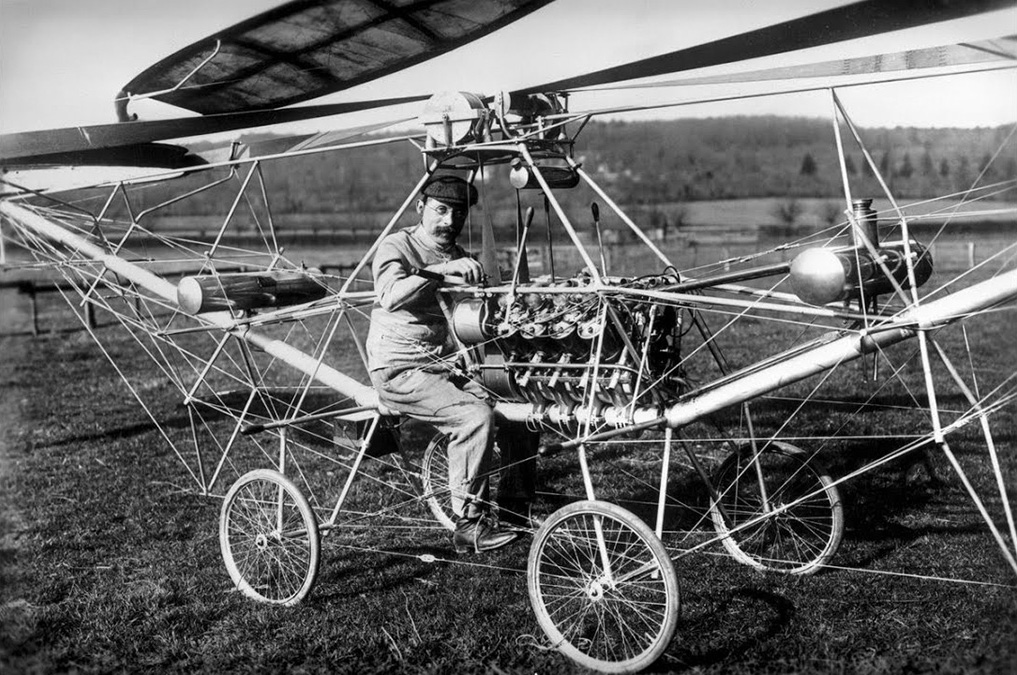
His aircraft was inspired by Giffard’s design, but he replaced the bulky propeller with twin contra-rotating rotors. As a result, this invention featured a distinctive configuration: two rotary rotors rotating in opposite directions at the front and back.
However, other inventors and their inventions have also contributed to the development of modern helicopters. For example, Etienne Oehmichen gave birth to the first helicopter that could carry two passengers, while Igor Sikorsky was the father of the first mass-produced model.
A Brief History Of Helicopter Development
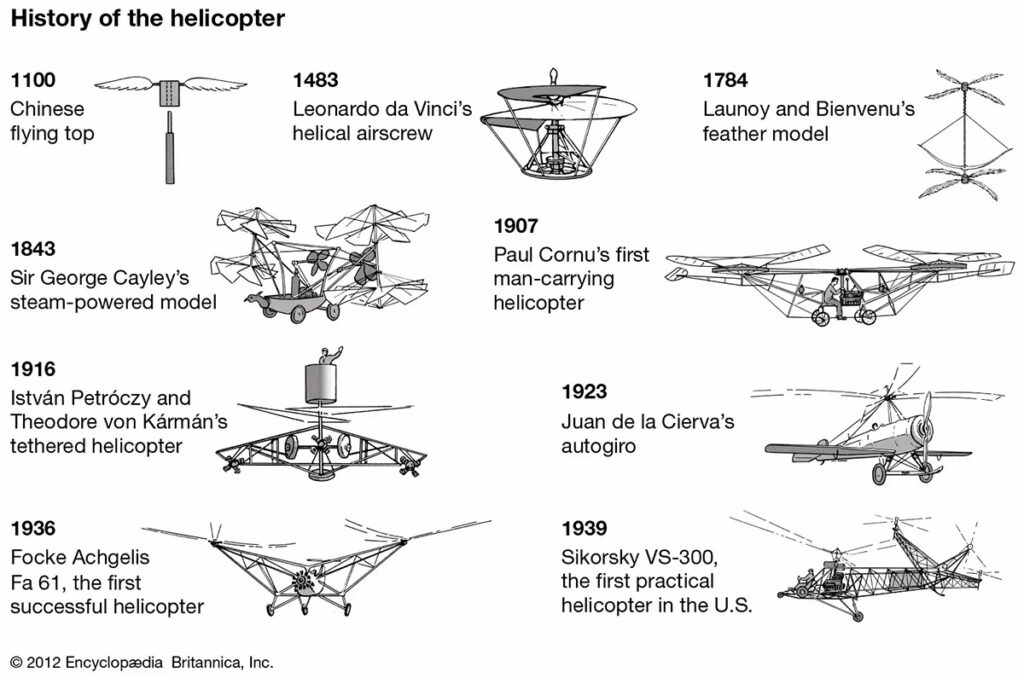
Early Traces
It is surprising that the idea of helicopters can be traced back to the 12th century. Their rotating rotors were inspired by the “flying top” toy from China, which consisted of spinning bamboo blades on top with feathers attached to them. By pulling a rope, the toy would rotate and briefly ascend into the air.
In 1483, Leonardo da Vinci came up with a sketch for a device called the “aerial screw.” His design was not put into practice, but the idea had planted a seed in the minds of inventors at that time.
More than 300 years later, Launoy and Bienvenu brought da Vinci’s idea to life. Their experiment was constructed from simple materials, including a cork, bird feathers, and some wire. This small model proved the concept of vertical flight, paving the way for subsequent advancements.
This science demonstration set the stage for the first steam-powered helicopter – designed by Henri Giffard in 1841. Though not mass-produced, Giffard’s design was a sign that powered helicopters weren’t just a fantasy.
In 1843, another inventor, Sir George Cayley, also experimented with a new idea. His creation utilized a complex system of weights and pulleys to turn the rotors. Unfortunately, this intricate design failed to go into production.
Only two decades later, Etienne Oehmichen created “Oehmichen No. 2”, widely regarded as the world’s first successful engine-powered helicopter. Also running on a steamed-powered engine like the Giffard helicopter, this model could fly as high as 10 feet and remain airborne for 1 minute.
Pioneering Experiments
Not until the 1900s was there a breakthrough in the rotorcraft industry. In September 1907, Louis and Jacques Breguet, two French inventors, made a short vertical flight with their human-carrying helicopter. Powered by a 45-horsepower engine, their invention featured four sets of rotors and a unique spiderweb-like frame. Under the supervision of aviation pioneer Charles Richet, their creation—Gyroplane No. 1—successfully lifted a person to a height of 2 feet for a short period.
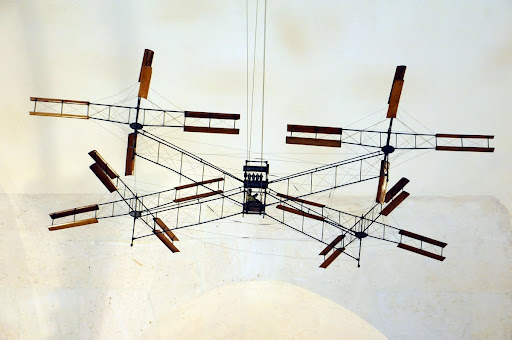
Also, in November of the same year, their compatriot Paul Cornu introduced his self-designed helicopter powered by a 24-horsepower engine. It could soar 1 foot above the ground and stay in the air for 20 seconds. Instead of a single propeller, he incorporated a pair that worked on the principle of counter-rotation. Though this version struggled to maintain stability, it marked an important milestone in the aviation industry.
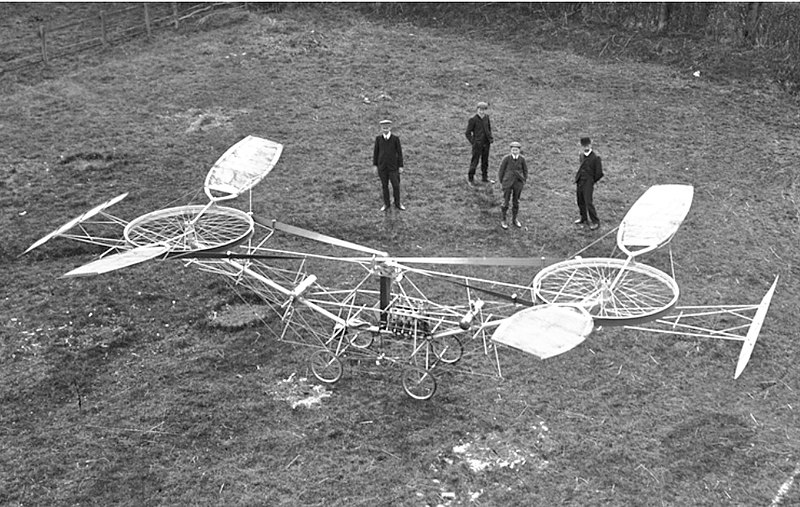
In 1916, István Petróczy and Theodore von Kármán had another groundbreaking invention. Their machine, known as the “Petróczy-Kármán Gyroplane,” remained airborne for 15 minutes at 3,000 feet. Their design retained two large propellers but increased the engine power to 50 horsepower. The most interesting detail was the operator’s seat above the propellers, resembling a crow’s nest.
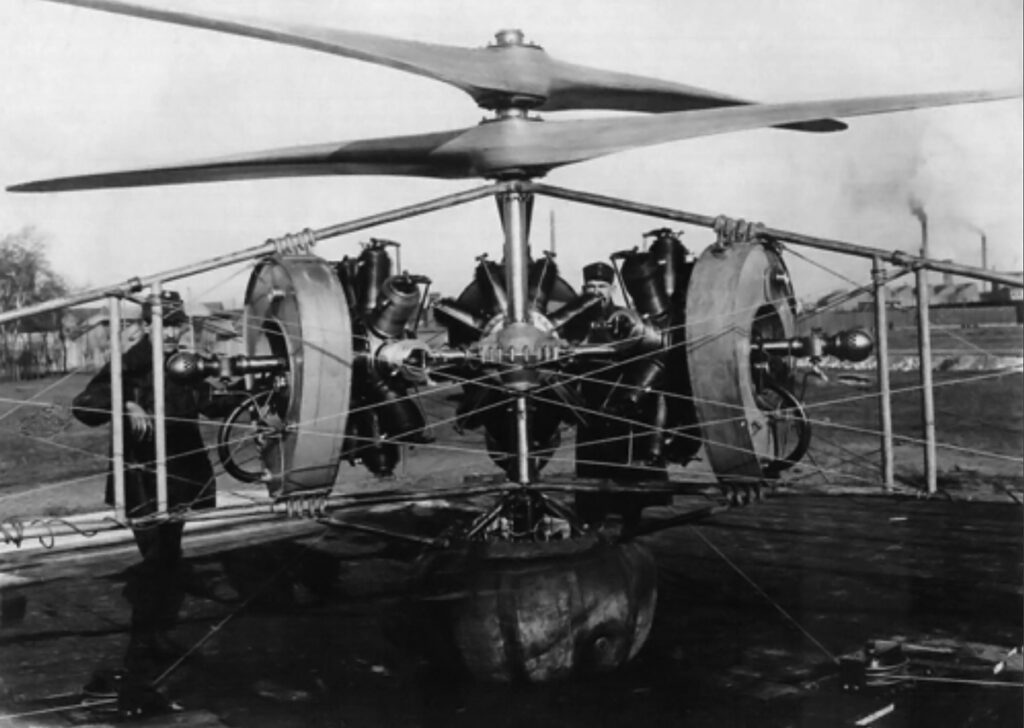
Taking Flights
The 20th century witnessed the golden era of the rotorcraft industry, leaning towards the perfect helicopters these days. In 1912, Jacob Ellehammer introduced the concept of cyclic pitch control. In 1924, Raúl Pateras Pescara set a new record for vertical flying distance of 2,415 feet. In the same year, Étienne Oehmichen made a name for himself by flying a 1-kilometer circle, breaking a new record regarding flying distance.
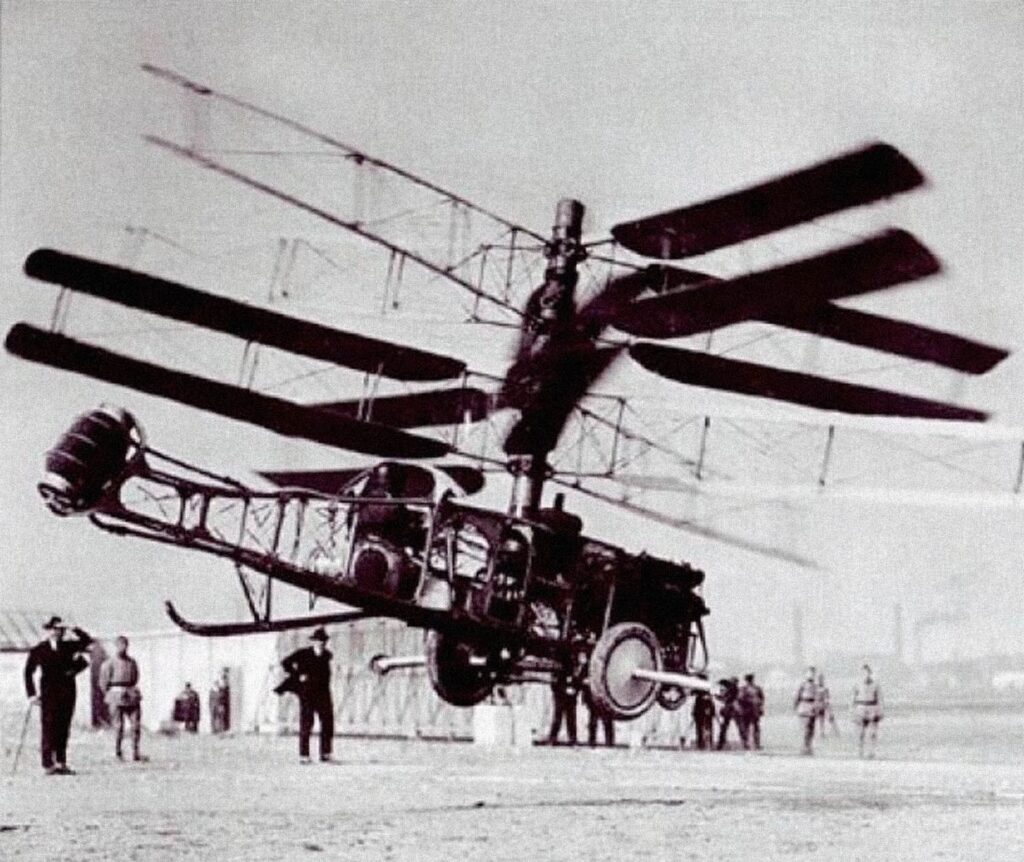
During this period, a parallel trend emerged with the advent of autogiros. Distinguished from the working principles of traditional helicopters, these machines relied on mechanical rotation. This setup proved the advantage of faster take-offs through the success of Juan de la Cierva’s autogiros. Undoubtedly, its rotor technology laid the foundation for a new era of true helicopter designs.
In 1936, Heinrich Focke propelled Germany to the forefront of the helicopter development race with his groundbreaking invention. His machine, “Focke-Achgelis Fa 61,” came with remarkable features, including a sealed cabin and a torque-free 160-horsepower radial engine. It accomplished a cross-country flight of 143 miles at 11,243 feet.
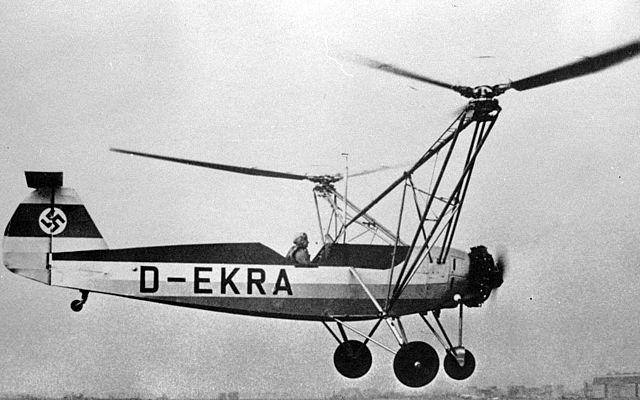
Meanwhile, Igor Sikorsky also conducted important aeronautical experiments in the United States. In 1939, he created the twin-engine Vought-Sikorsky VS-300 that could stay aloft for up to 30 minutes. This small aircraft resembled modern-day models despite its limited power and subpar handling.
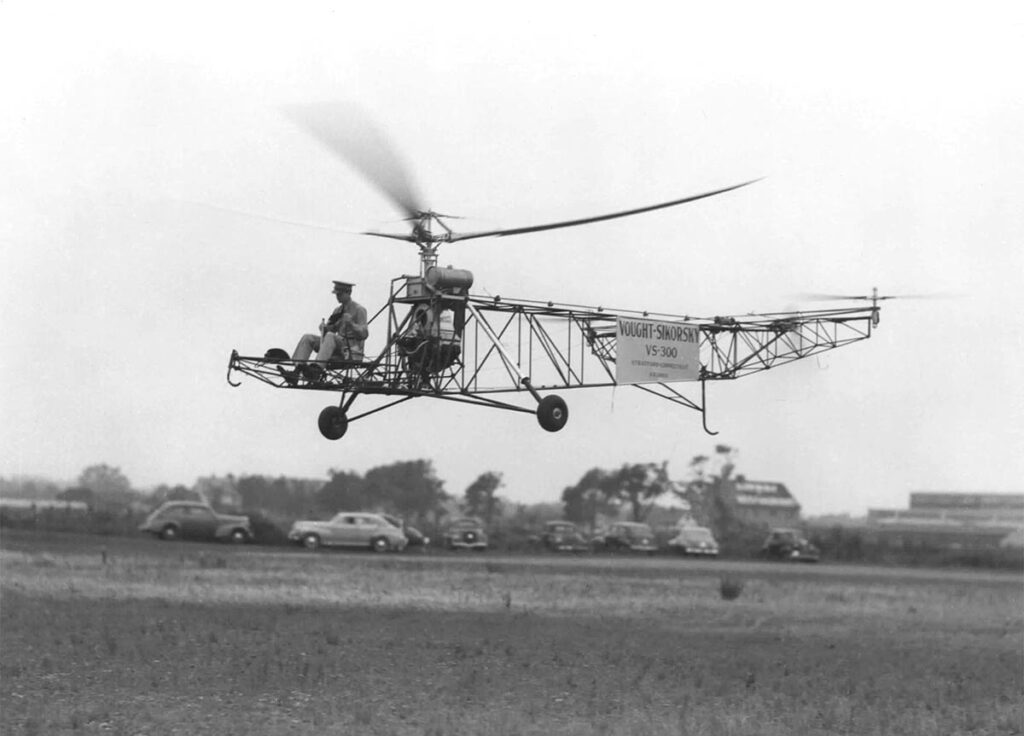
The Advancements
Igor Sikorsky continued his visionary work and achieved greater success in 1942. “The Sikorsky XR-4” came into the public eye as the most advanced helicopter of its time. This cutting-edge aircraft surpassed all others on the market in terms of performance, speed, and altitude.
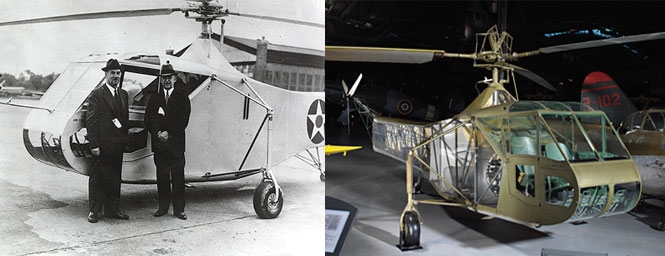
When World War II broke out, helicopters were increasingly adopted worldwide. The greater demand fueled competition, attracting numerous young manufacturers to enter the game. Governments authorized these companies to produce specialized models, such as the “Hoverfly” for rescue missions or the “YH-13 Sioux” for medical evacuation.
The market was flooded with numerous advanced aircraft in the following years. In 1947, the Bell Aircraft Corporation launched the Bell Model 47. It applied the innovative concept of turbine-powered engine, reaching 100 mph in speed. It gained popularity worldwide and became the first choice for civilian use.
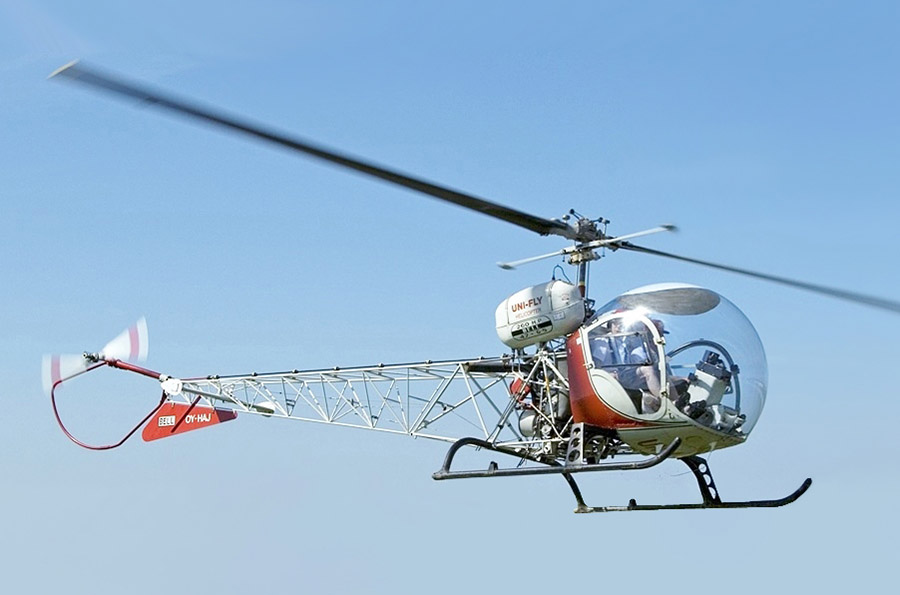
In the same year, Sikorsky Aircraft launched the “S-51” – the first mass-produced model. In 1951, Kaman Aircraft Corporation had incorporated jet engine technology into their HTK-1 models.
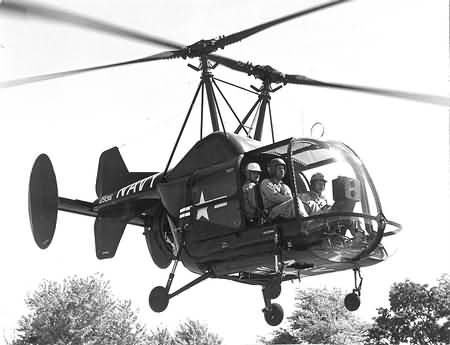
Helicopters continued to evolve over the following decades. In the 1970s, turbine engines were utilized in production, exemplified by the Bell UH-1 “Iroquois” or “Huey.” During the 1990s, helicopter design and technology were undergoing a revolution, and many helicopters were built for different purposes, like civilian use, law enforcement, aerial photography, and air taxi.
Since the 2000s, more advanced helicopters have been used for medical emergencies, military, and civil aviation.
See more:
Conclusion
Helicopters are not an overnight invention; they’ve gone through numerous advancements before evolving into a universal means of transportation in modern days. One of the earliest milestones was the creation of Paul Cornu in 1907. However, helicopters still have a long journey ahead that we must pay attention to.

